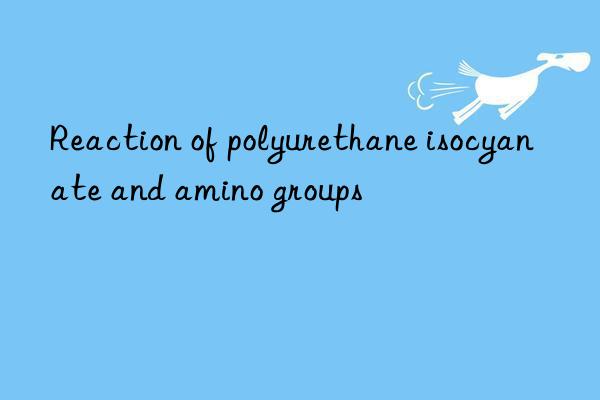
The reaction between amino groups (primary amino groups and secondary amino groups) and isocyanate is one of the more important reactions in the preparation of polyurethane. Isocyanates react with amino groups to form substituted ureas. Generally speaking, the reactivity of amino groups with isocyanates is higher than that of other active hydrogen compounds.
Affected by the structure of isocyanate and primary amine compounds or secondary amine compounds. Strongly basic amines are highly reactive. Aliphatic primary amines and isocyanates can react quickly at 0 to 25°C to generate urea compounds.
Aliphatic secondary amines and aromatic primary amines react more slowly with isocyanates than aliphatic primary amines. For aromatic amines, if there are substituents on the ortho position of the benzene ring, the reaction activity will be lower than that without ortho substituents due to the steric hindrance effect; ortho electron-withdrawing substituents (such as halogen) make the amino group much more active. reduce. Aromatic amines with electron-donating substituents at the para position, such as p-methylaniline, are more active than those without substituents. This is because it makes the amino group more basic through the benzene ring and easily loses protons.
The commonly used diamine compounds are aromatic diamines with mild activity such as3,3′-dichloro-4,4′-diaminodiamine Benzene (MOCA), etc., the sterically hindered electron-induced effect of the ortho-position Cl atom of the MOCA amino group makes NH2 less active. Table 2-6 shows the gel time of the reaction between several aromatic diamines and NCO-terminated polyurethane prepolymers.
OCH3OCH3amino3,3′-dimethoxy-4,4′- The activity of diaminodiphenylmethane is lower than that of 4,4′-diaminodiphenylmethane (MDA) without ortho-substituents. This is because although OCH3 has an electron-donating effect, its steric hindrance reduces the reactivity of the amino group. The activity of MOCA is lower, consistent with the analysis above. Since one benzene ring in the biphenyl group has an inductive effect on the other benzene ring, the amino activity of 4,4'-biphenyldiamine is slightly lower than that of 4,4'-diaminodiphenylmethane.

 微信扫一扫打赏
微信扫一扫打赏

